
The View Strikes at Once
Excerpts & deep cut photographs from GOGO co-Founder Eddie Lott’s upcoming photo journal chronicling the Serra do Espinhaço & its inhabitants.

Toníco, out there (& Barefoot). Angu Duru. 2021
The first time I knowingly visited the Serra do Espinhaço Meridional was in May of 2018. I was scouting the region in advance of GOGO’s first-ever bespoke trip, hoping to find an under-the-radar setting worth spending a few days in between Ouro Preto, Minas Gerais & Rio de Contas, Bahia (about a 24-hour drive by 1989 Toyota Bandeirante, if taken directly).
I’d unknowingly passed along the western border of the range once before, during a roadtrip to Chapada Diamantina with my kids (then 3- & 4-years old, respectively) in 2013, and even though we’d stopped only briefly at a scenic roadside truck stop, the mental images I registered that day never left my mind. I vividly remember checking the map and wondering where we were, why it was so striking geographically, and why no one had told me about not only that particular part of the range, but the larger region around us.
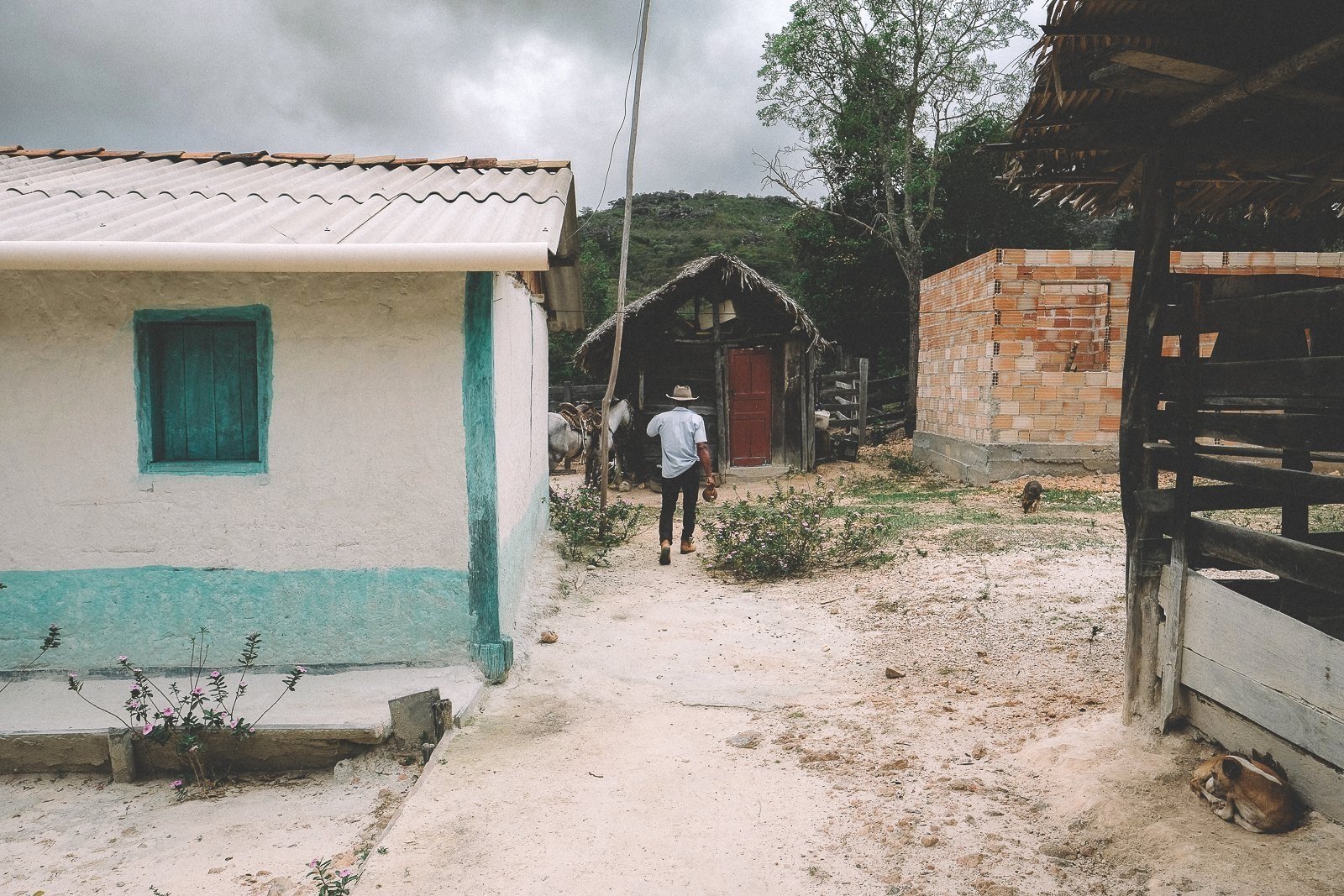
Morning at Santo’s / Preparing the horses. Bica D’Agua (2021).
In 2006—7 years before that fateful trip to Chapada with my toddlers, and a full 12 years before the first GOGO bespoke trip—I’d spent the better part of a year working part-time for Brazil’s most renown trekking company (PISA) as a guide in another beautiful mountain range in Minas, just 8 hours away: the Serra da Mantiqueira. Concurrently, I built itineraries for adventurous travelers to beautiful, nationally recognized but internationally unknown destinations across Brazil as the North American account manager at one of the country’s first ecotourism agencies, Biosfera Brazil.
None of my colleagues at either PISA or Biosfera had ever so much as mentioned the region my toddlers & I suddenly found ourselves in. Neither had my brother-in-law, Luzimar, a vivacious mineiro (resident of Minas) who’d spent 2 years traveling across the country by motorcycle in the 1970s, and whose map I had with me at that fateful truck stop along the western edge of the range in 2013.
Levi’s House. Fazenda Arrenegado (2019).
Guesthouse in Quarteis (2021).
Buteco Bananal. Fazenda Santa Cruz (2021). Butecos are no-frills watering holes found throughout Brazil; akin to cantinas in Mexico or dive bars in the U.S.. I passed by this particular one during a 12-hour hike with a young man named Lucas from the neighboring community of Vau. Lucas was the only person I’d ever met who’d been to the semi-mythical waterfall of Bananal. He’d taken a bad spill on his bike a few months before our hike that had nearly taken his life, and there were new scars all over his face & arms & legs. My shorts ripped completely during our hike back (and I wasn’t wearing underwear), and I had to hold them together while walking along the road for about 3 hours. We went to Lucas’s grandma’s house in Vau, and she sewed them up for me while I waited naked in the guestroom. Then we picked jabuticabas from the tree in her backyard and watched the Corinthians game on TV with his grandpa before trekking back to São Gonçalo after sunset. I’ve been back to Fazenda Santa Cruz just once ever since, with Elisa, and this time the buteco was my destination. The falls are beautiful—almost lunar in appearance—but I’d already been there. Now it was buteco that had become mythical. The mind is truly a mysterious thing.
I first arrived in Diamantina at night, and even though I could hardly make out any of the scenery around me, the silence & the uncanny roads spoke volumes. Just beyond the town’s winding southeastern exit I began to see (and sense) the dark silhouettes of the Espinhaço pressed tightly against the road.
By the time I’d made it over the vast stretch of cobblestones, dirt roads, paralelipipido, and pristine blacktop on the outskirts of the city, and had begun my ascent into the pitch black serra between Vau & São Gonçalo do Rio das Pedras, I knew I’d arrived somewhere special.
I’ve spent nearly 4 full calendar years trekking, jeeping, riding, researching, and mapping the extensive labyrinth of lost trails in the Espinhaço since then. In 2019, I met Elisa, my wife & co-Founder at Gift of Go, in São Gonçalo (I like to think I was just hanging out & she was looking for a life-changing adventure) and, after some real life adventures* here & there, we returned to where our story began, immersing ourselves in the region’s spectacular, forgotten history, nature, and culture.
It’s an easy place to fall in love with; the kind of place a seasoned world traveler could spend a lifetime looking for and not find; the kind of place that makes a lost soul feel at home.
Elisa & I don’t own a home or even land here yet. We came close in 2021, but decided to invest ourselves & our resources in creating Gift of Go instead (no regrets thus far!). We’re not “home” people still/yet. But if we had to pick a place today, it would be here. This is where we come back to. This is as special a place as any. It’s a living story worth sharing.
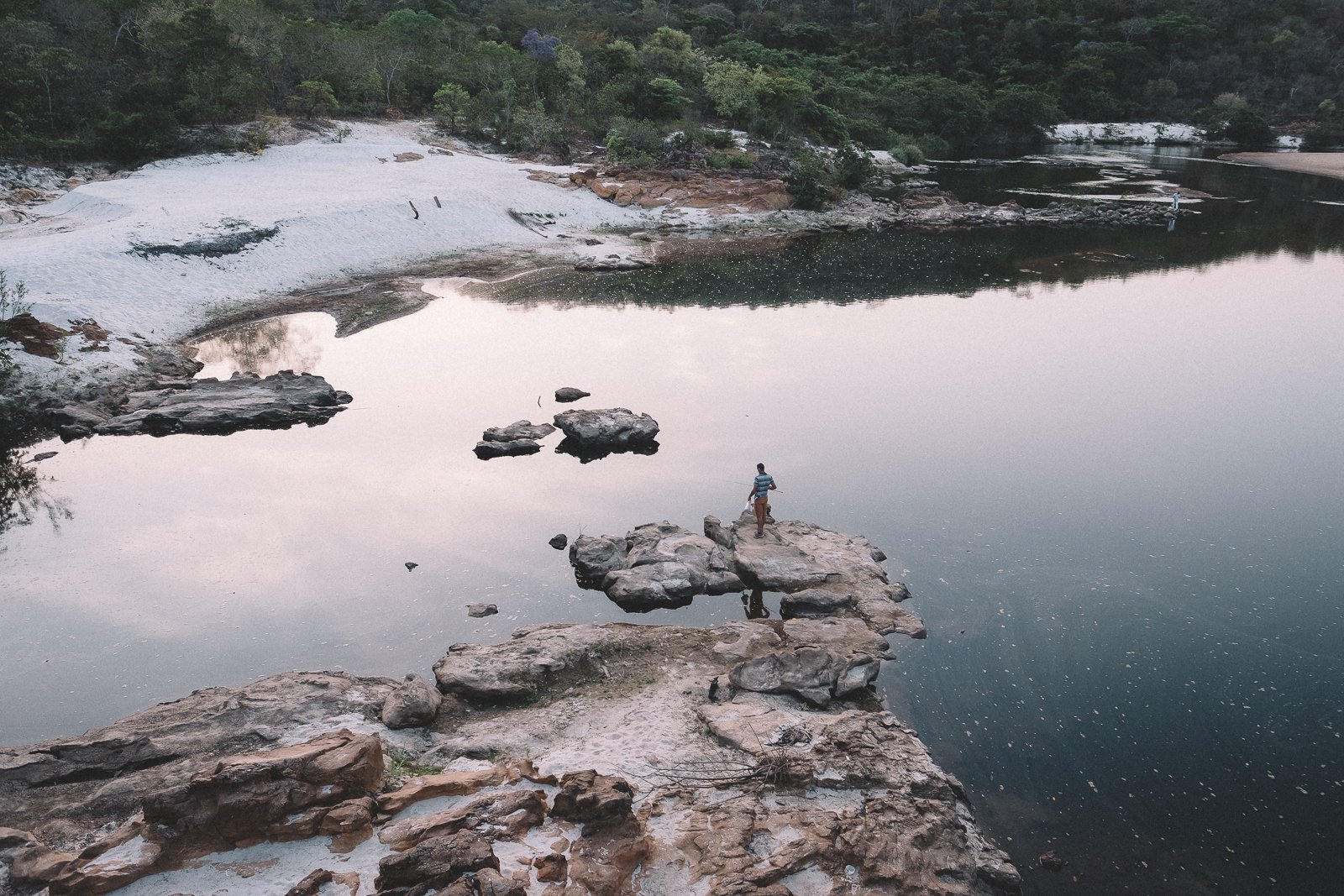
Ponte da Amizade. (Inhaí, 2021)
dona raquel, conselheiro mata (2019).
decisões. conselheiro mata (2019).
mourning. solar dos cristais, conselheiro mata (2019).
sheets. pousada capistrana, diamantina (2019).
o caminho da usina. conselheiro mata (2019).
fairy falls. conselheiro mata (2019).
The first time I stood in front of Cachoeira das Fadas (literally, Waterfall of the Fairies), I was overcome with emotion. I was recently separated, away from my sons, living out of my jeep in Brazil. It was Thanksgiving, and there was no one around.
I’ve brought lots of people to this waterfall since then. There is always a reaction.

The schoolhouse. Conselheiro mata (2019).
grota seca. sao goncalo do rio das pedras (2019).
Grota Seca was the first “waterfall” (more of a swimming hole, in my mind) that I visited in the Espinhaço, and due to its proximity to São Gonçalo do Rio das Pedras (which I used as a base from 2018-20), I’ve been back many times since. As a small, unnatural waterfall in a region teeming with stunning white-sand-beach waterfalls, it is perhaps a little underwhelming. As a destination on a lazy, sunny day in São Gonçalo, though, it’s unbeatable. The Espinhaço is a treasure chest full of tiny gems. They add up.

Levi, Looking for fresh eggs. Taquaral, 2019.
Thunbergia laurifolia. (Mendanha, 2021)
Quiabo da lapa. (Serra do Raio, 2021)
Lichen laranja. (Rio PReto, 2021)
D. pseudoinsignis. (Santa Rita, 2021)
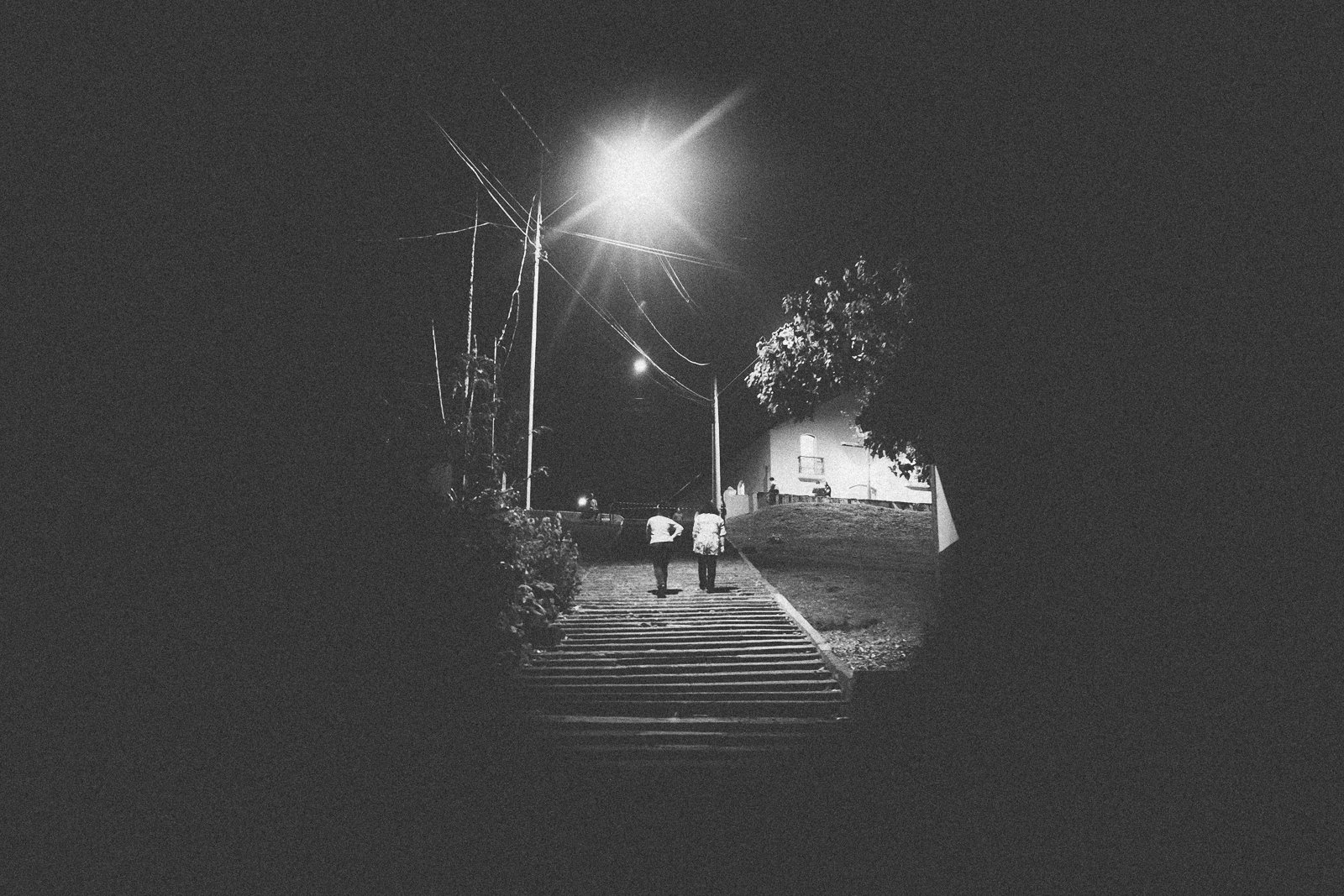
Mendanha at Night. 2021.
Parque estadual do rio preto. (2021)
The Rio Pinheiro, near Lavrinha, between Biribiri & Pinheiros—a tiny district of Diamantina that Júlio & I jokingly refer to as the unheralded Brazilian capital of alpinismo due to its brutal, vertical roads & trails. As the son of an immigrant (my mom is from the Philippines) in a country full of immigrants (the U.S.), I’ve always reflected on how immigrants tend to migrate to places that remind them of home.
It took me several kms of deep thought before I figured out what this particular area reminded me of. When we got to this point on the trail I realized exactly what I was looking at: the northern tip of the Texas hill country, near Ranger.

Park Road. Sempre Vivas National Park, 2021
Pico do Itambé, as viewed from the trail to Capivarí from São Gonçalo do Rio das Pedras. The first time I walked this trail, I didn’t know where it led. I had a hunch that it would take me to the quilombola village of Capivarí (which I’d heard of, but had never visited), but I wasn’t sure, and my cell phone had died moments before I’d come across the trailhead.
It was around 4 pm when I took my first steps (at that point, jogging). At around 5:30 pm I reached a lonesome house on the trail. There was a large family there and everyone was celebrating inside & outside the house. They were initially taken off guard by my presence (everyone was pretty inebriated), but soon became delighted. I accepted a coffee and received confirmation that the trail did indeed go to Capivarí, which they emphatically described as being just a few minutes away.
When I reached the entrance of Capivarí at around 6:30 pm, it began to rain. I knocked on a few doors and found dinner. I knocked on a few more and found a place to stay. I knocked on a few more and found a ride back to São Gonçalo. That’s pretty much the story of (our work at) Gift of Go.
Itambé, as viewed from the Vargem da Cobra, on the Trilha dos Tropeiros.
Fateful wall art. Pousada Capistrana (2019)
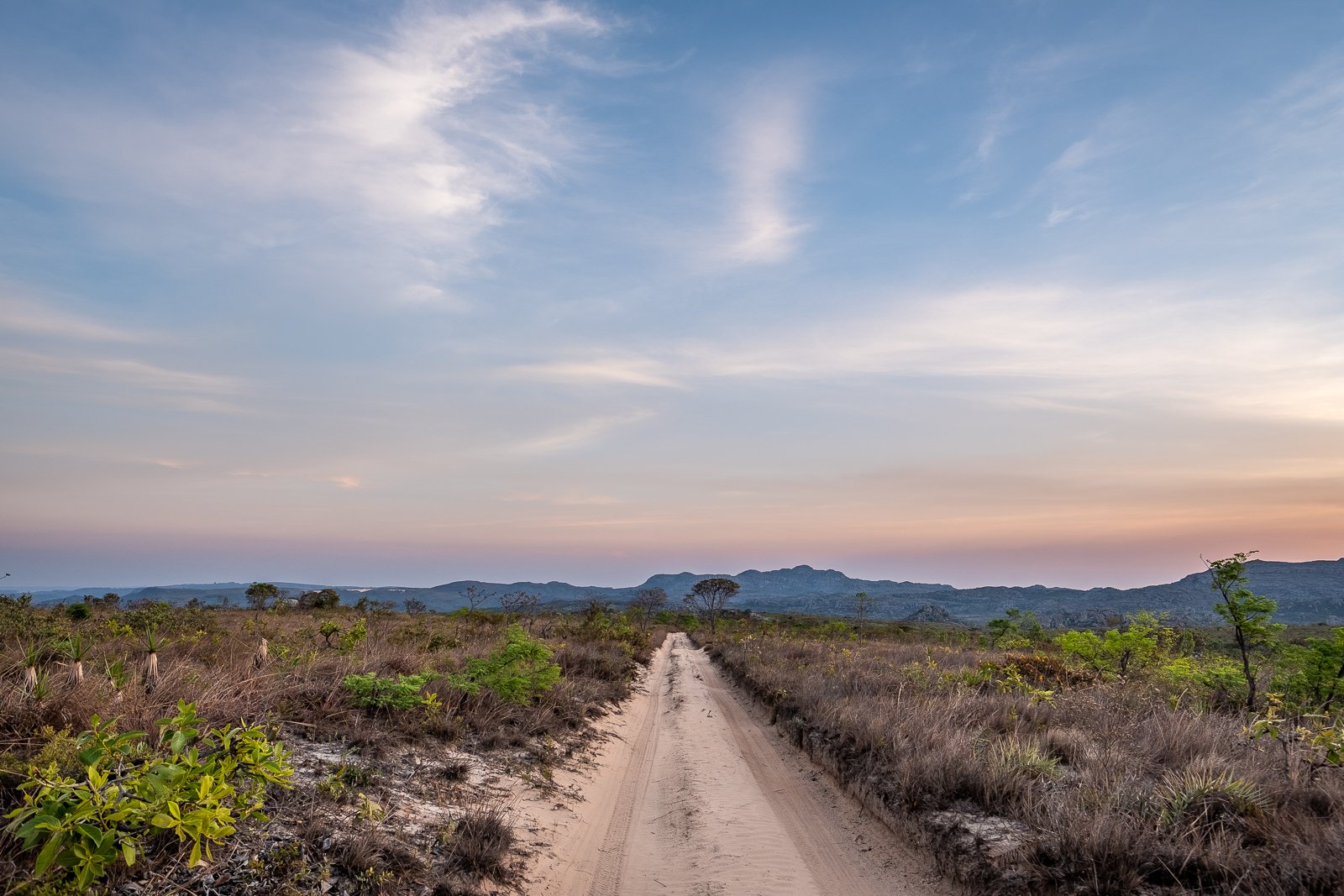
Park road. sempre vivas national park (2021)
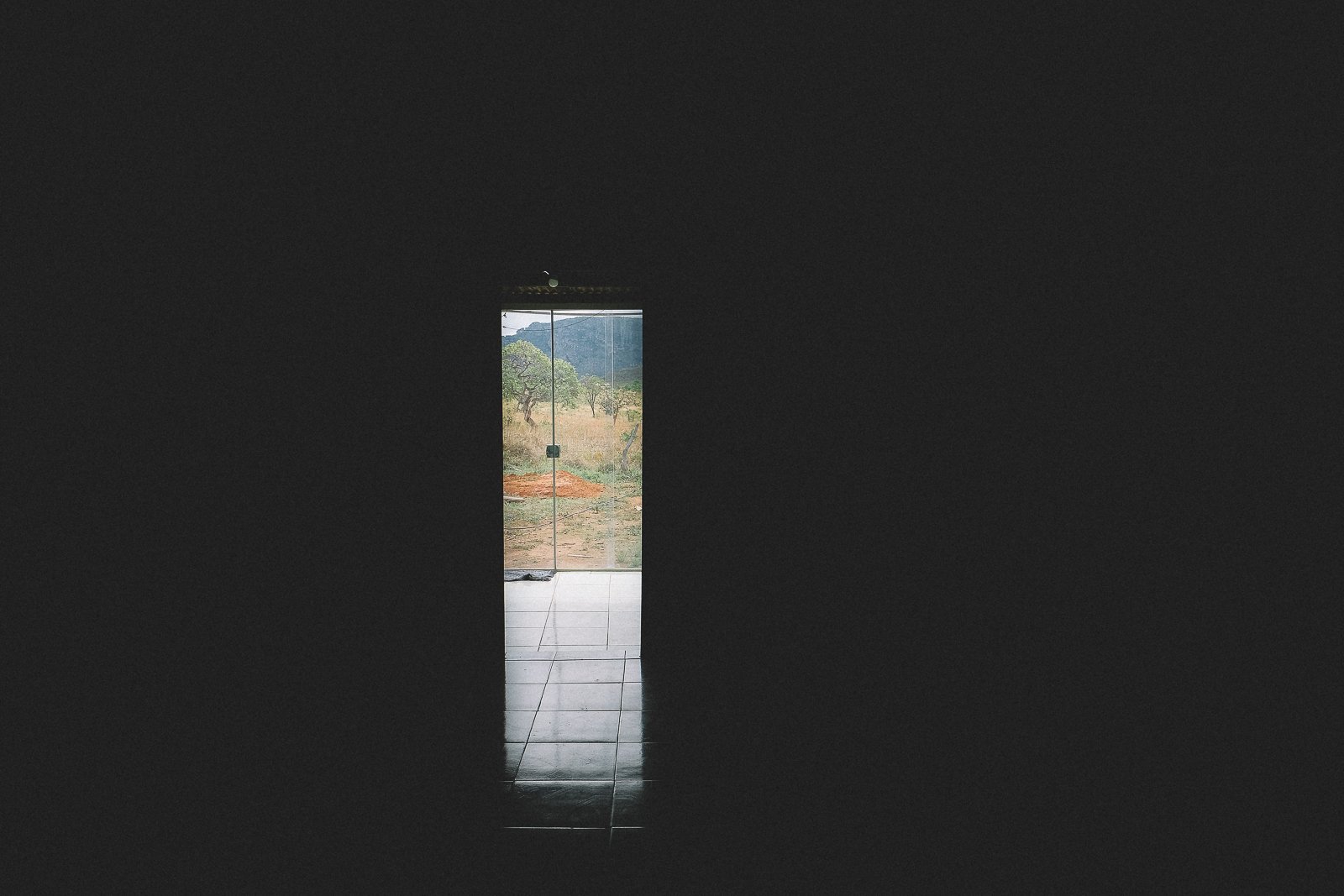
Nica's House, no. 1

Nica's House, No. 2
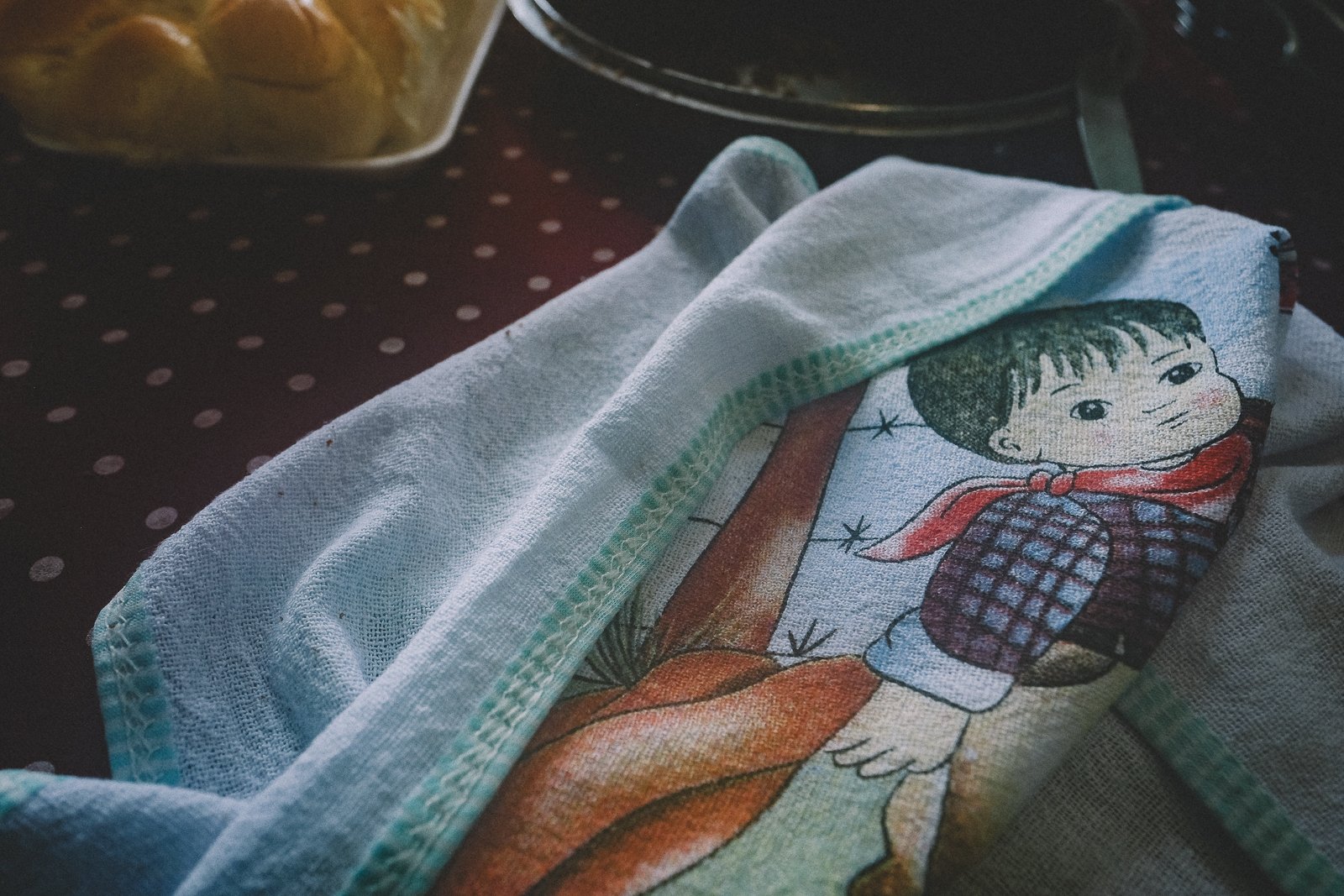
Nica's House, no. 3
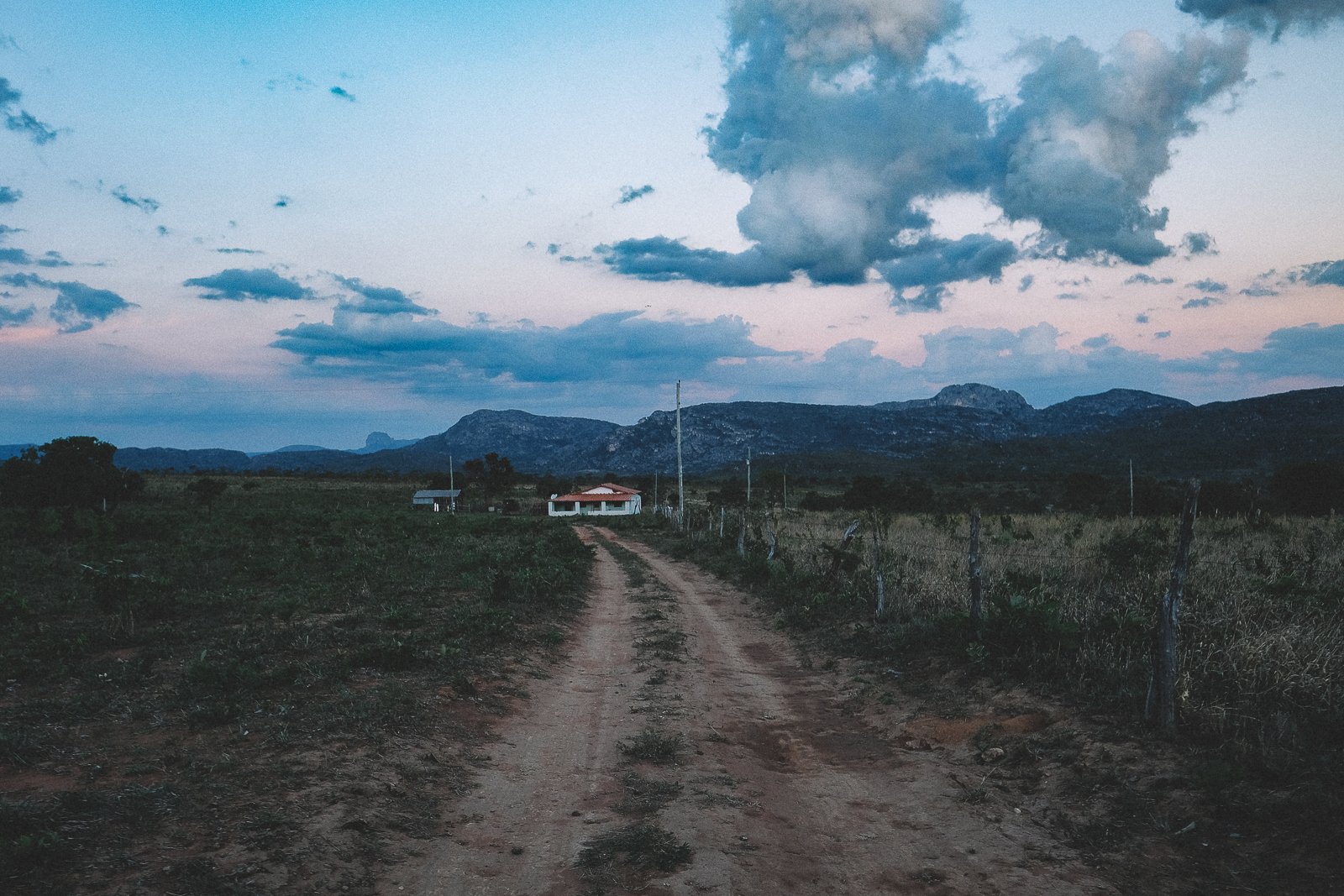
Nica's House, No. 4
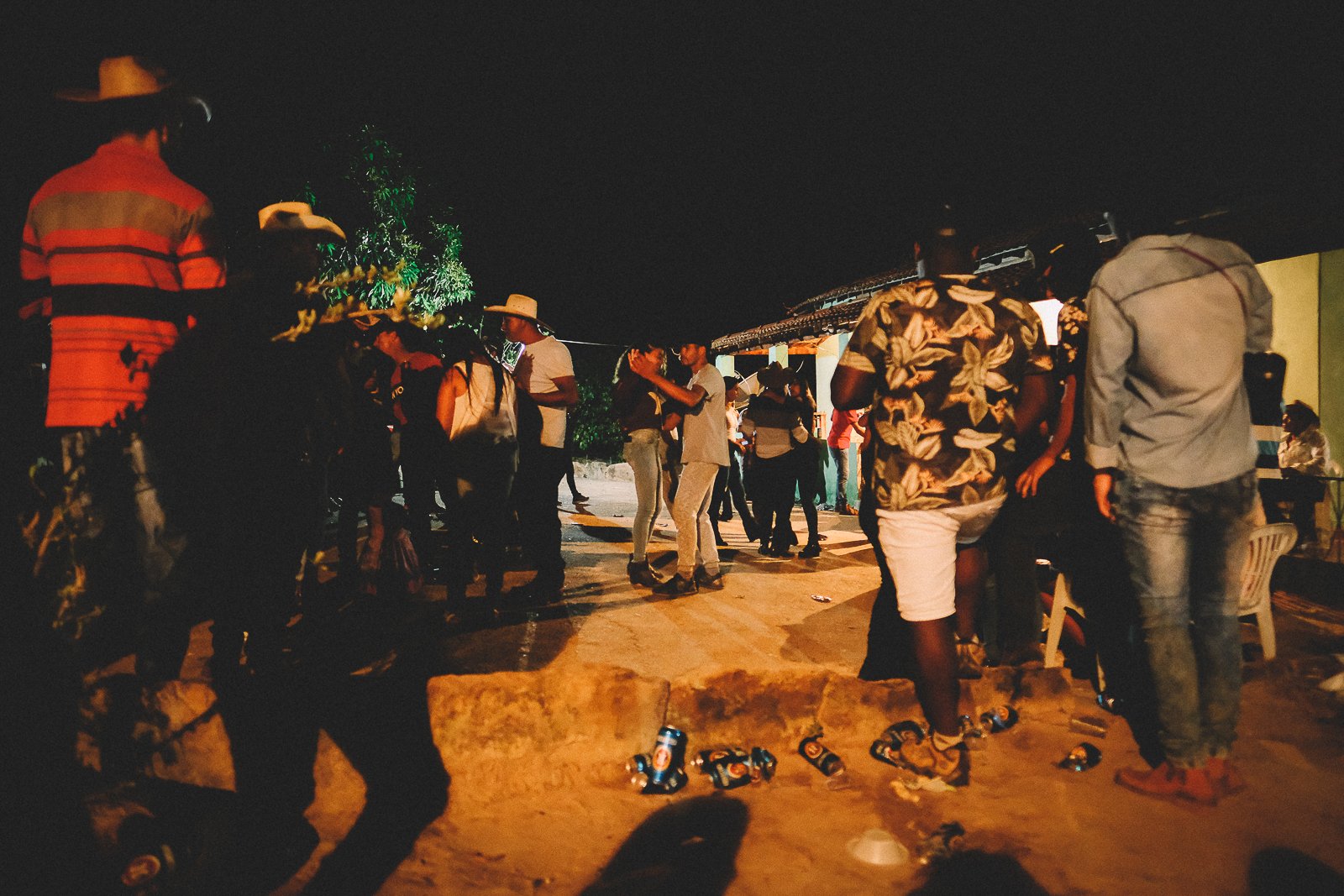
Party in Buriti, near Nica's house. I didn't actually take this photo--Julio did. But I'm the one who brought the camera and got us into the party, and I was also getting Julio a beer at this particular moment, so I'll take some credit. He took about 30 shots of this scene and this was the 30th. The rest is history. Sometimes it works out like that.
Sertanejo. Santa Rita (2021). His name is Leandro, and he was carrying a pistol in his back pocket. He & Júlio & I rode in the back of Pê’s pickup to the (greatest) party (ever) in nearby Burití do Claúdio (pop. < 10). Leandro was hammered before we even climbed into the truck. He must have told me to take his pistol and shoot it ten times during the ride. I declined.





















